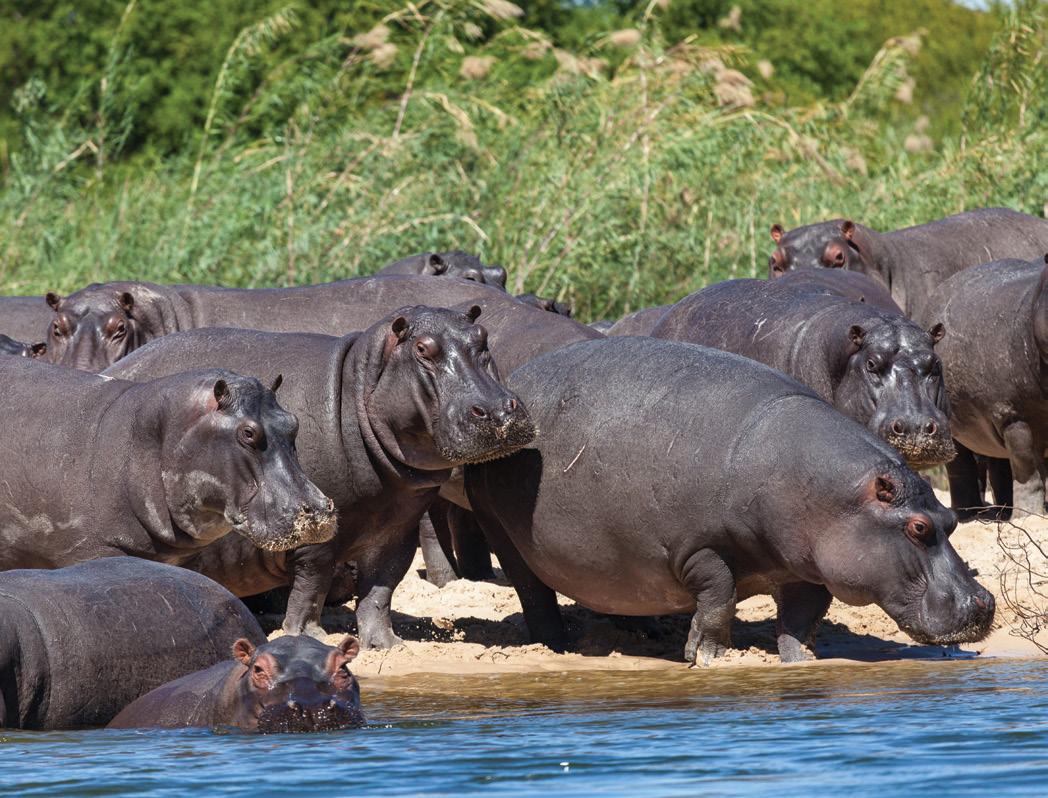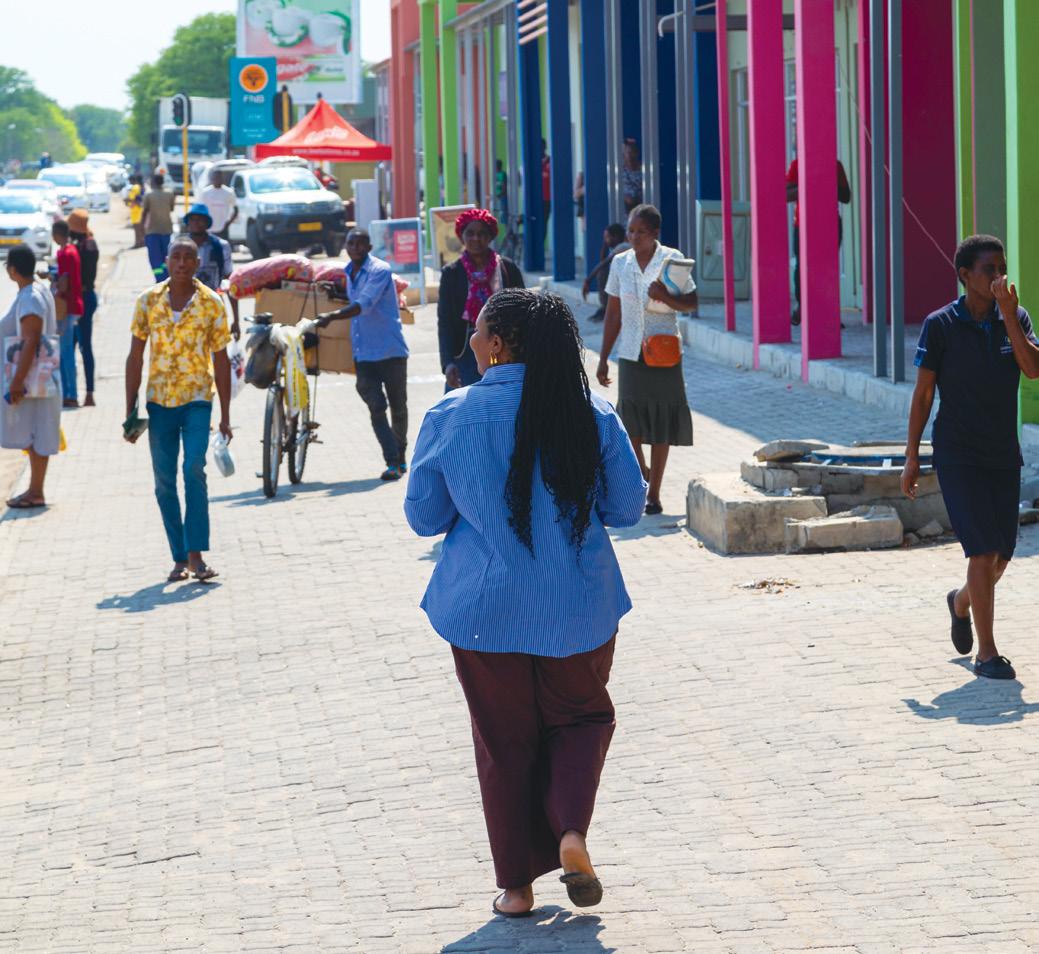
4 minute read
The Zambezi Region
Formerly referred to as the Caprivi, the Zambezi Region is a fertile wilderness of riverine forests, floodplains, swamps and open woodland created by a complex network of rivers and relatively high summer rainfall. For freshwater angling enthusiasts and canoeists, Zambezi offers much excitement and challenge. Well over 400 of Namibia’s bird species occur in this part of the country, and the region is an ideal retreat for birdwatchers, nature lovers and specialist travellers. It is also of interest to scientists studying the wetlands system and its flora and fauna.
In pre-colonial times known as Itenga, Zambezi was ruled by the Lozi kings until it became part of the British Protectorate of Bechuanaland, today’s Botswana. In 1890, at the Berlin Conference, Germany acquired the territory, named it after German Chancellor Count Georg Leo von Caprivi, and added it to German South West Africa. The capital of the Caprivi was Schuckmannsburg (renamed Luhonono in 2013) until 1935, when it was moved to Katima Mulilo, a name that means ‘put out the fire’. Katima Mulilo has since become a busy tourist centre and gateway to Victoria Falls in Zimbabwe and Chobe National Park in Botswana.
Travelling from Katima Mulilo on the B8, you cross into Botswana at the Ngoma border post. The road now traverses Chobe National Park to Kasane, the springboard to Impalila Island where Namibia borders on Botswana, Zambia and Zimbabwe. The link for these attractions is the 575-kilometre TransCaprivi Highway, a wide, tarred road that has replaced the dusty gravel tracks of the past. The route runs through a region of which one third is a floodplain. Providing access to three state-protected game reserves, it lies in the geographic heart of the KavangoZambezi (KaZa) Transfrontier Conservation Area. Read more on KAZA further down in this section.
KATIMA MULILO

The largest town in Zambezi, Katima Mulilo, lies on the banks of the Zambezi River, at the crossroads of Namibia, Zambia, Zimbabwe, Botswana and Angola. It beats with the pulse of Africa and is a microcosm of Zambezi, a place where seven different languages and many more dialects are spoken, with traditional villages bordering the town and open markets resonating with more modern conveniences.
Dirt tracks and freshly paved roads in the centre of Katima Mulilo lead you to a mixture of old and new shops, banks and small businesses. An interesting feature of the town is an ancient baobab which once housed a flush toilet in its hollow trunk. A large, vibrant African market in the centre of Katima Mulilo provides a glimpse into the daily lives of Namibians in this lively town.
Zambezi pottery and baskets are noted for their distinctive beauty and symmetry. The fine workmanship of the Zambezians can be seen in the crafts offered for sale at several outlets, including the Katima Craft Centre next to the open market in Katima Mulilo; the Ngoma Crafts Centre near the Ngoma border post; Mashi Crafts at Kongola; and at the Lizauli Traditional Village, where a programme of traditional music and dance gives visitors an insight into Zambezian culture.
The Green Basket Café is a great place for a meal, and it also provides information on what to see and do in the area. If you’re looking for entertainment on the banks of the Zambezi River, Bezi Bar is a favoured hangout for locals and visitors alike.
Katima Mulilo Airport is situated 20 km outside the town within two hours’ drive from Victoria Falls and not more than four hours’ drive from the Okavango Delta in Botswana. FlyNamibia offers several flights a week between Windhoek and Katima Mulilo.
Find more Namibia travel inspiration at www.thisisnamibia.com
Follow @thisis_namibia on Facebook and instagram for extraordinary Namibia travel stories

